
How to Use Connector 5V: Examples, Pinouts, and Specs
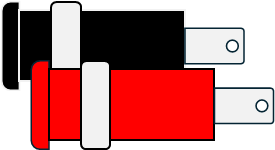
 Design with Connector 5V in Cirkit Designer
Design with Connector 5V in Cirkit DesignerIntroduction
The Connector 5V is an essential electronic component that provides a stable 5-volt power supply to electronic circuits. It is commonly used in a variety of applications, including powering microcontrollers like the Arduino UNO, sensors, and small motors in DIY projects, robotics, and prototyping.
Explore Projects Built with Connector 5V
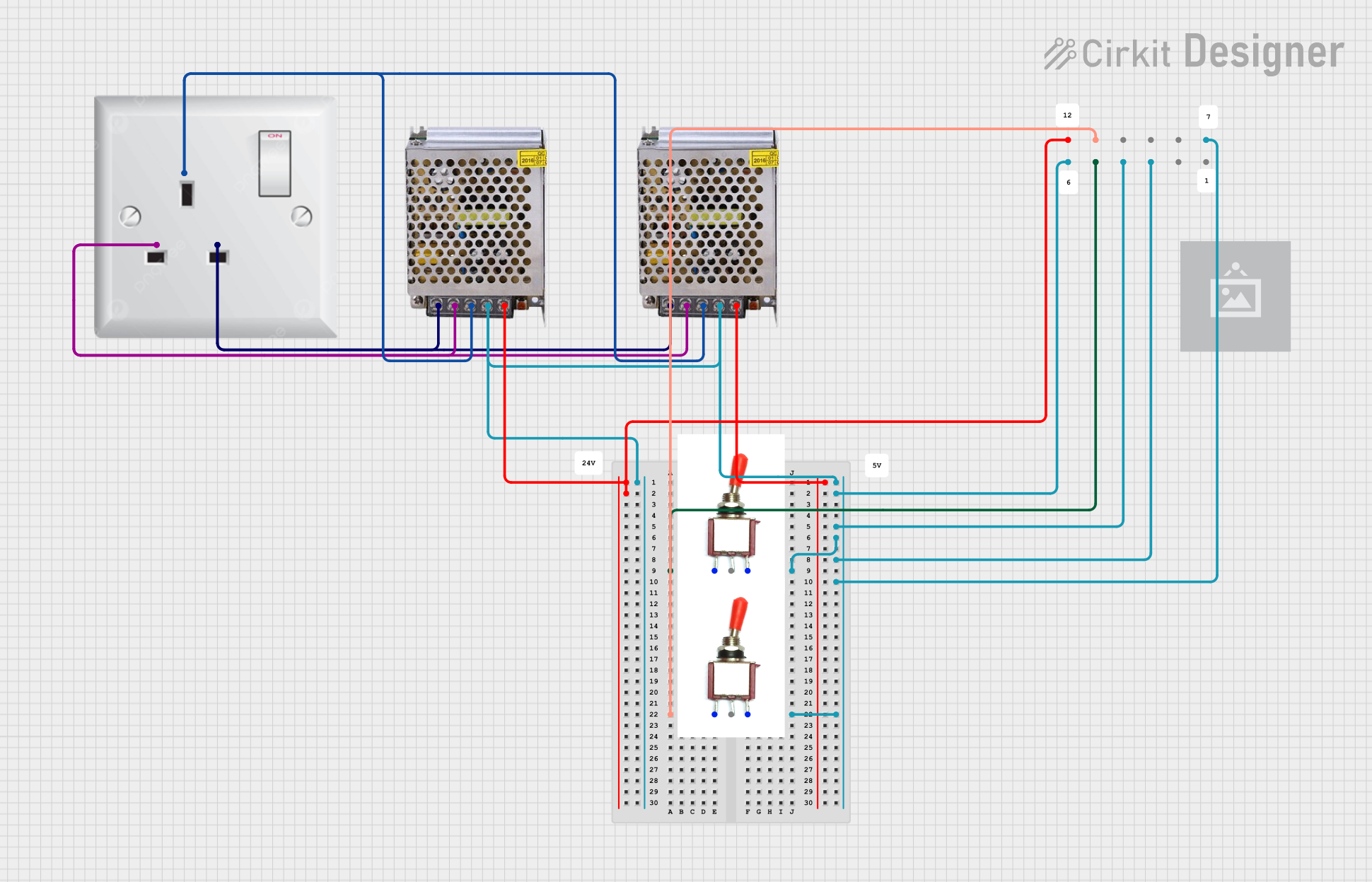
 Open Project in Cirkit Designer
Open Project in Cirkit Designer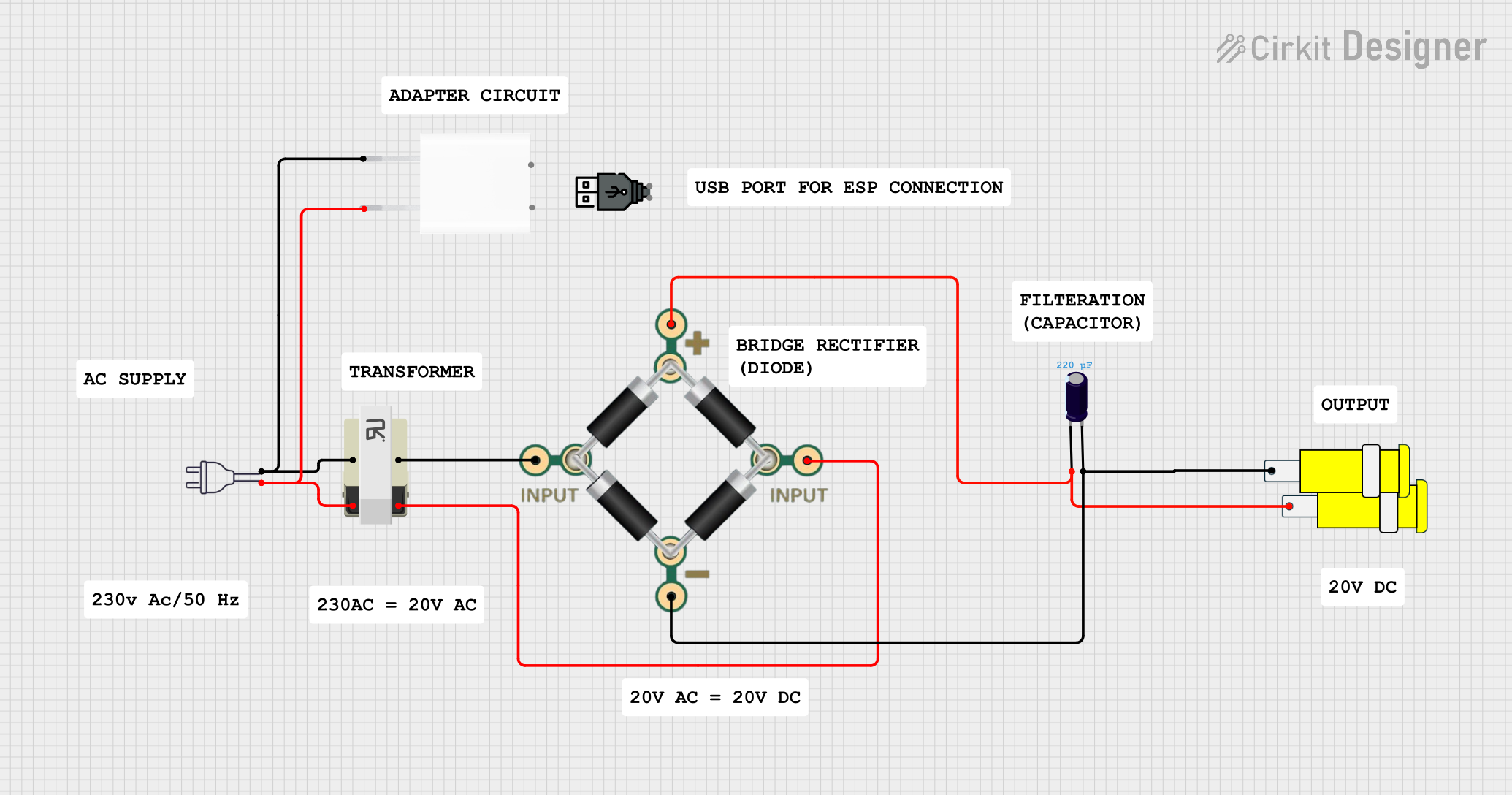
 Open Project in Cirkit Designer
Open Project in Cirkit Designer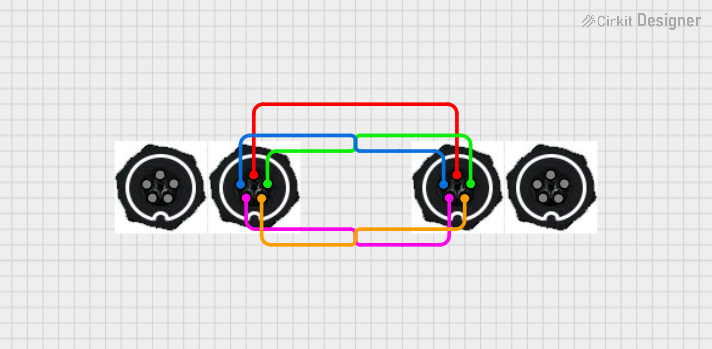
 Open Project in Cirkit Designer
Open Project in Cirkit Designer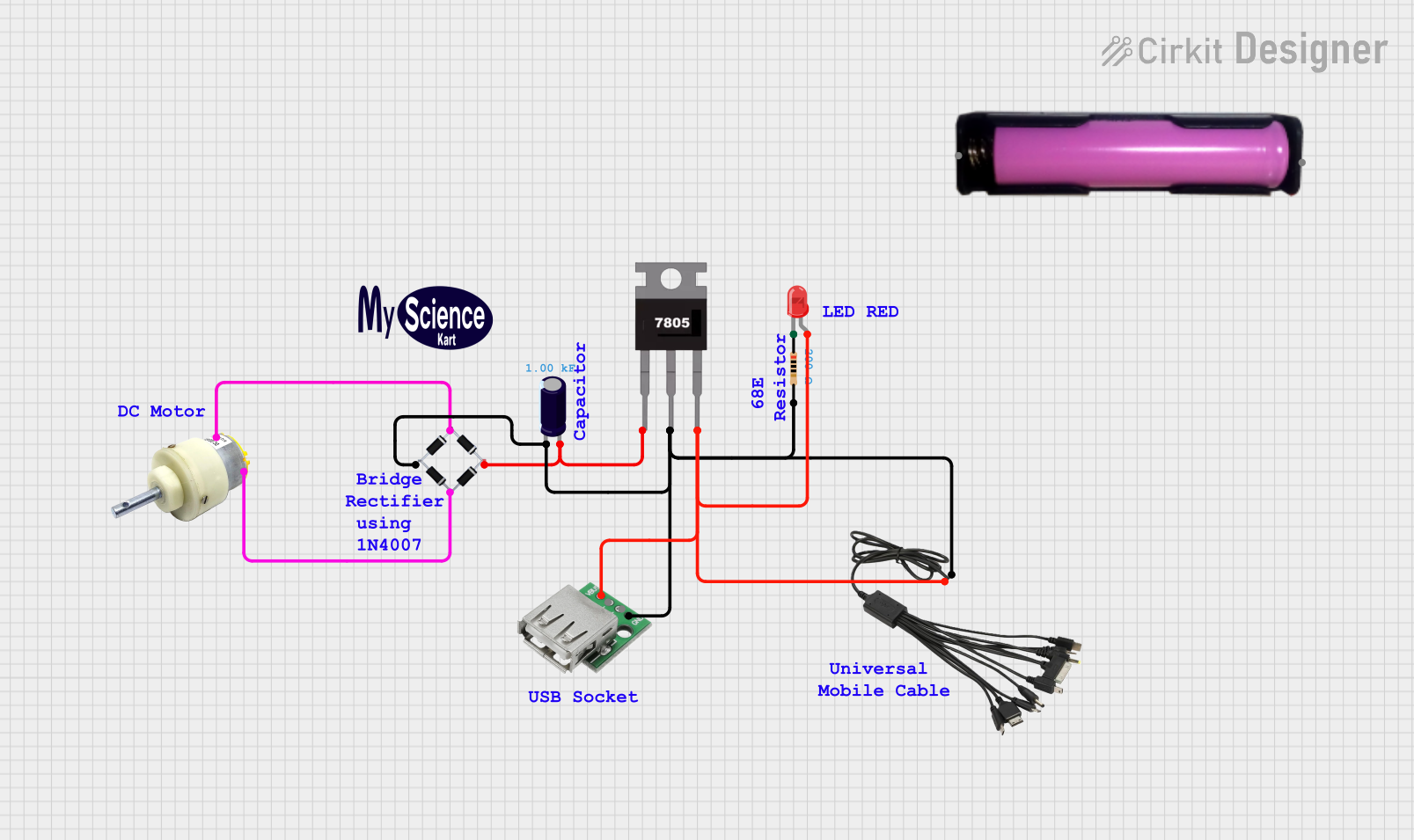
 Open Project in Cirkit Designer
Open Project in Cirkit DesignerExplore Projects Built with Connector 5V

 Open Project in Cirkit Designer
Open Project in Cirkit Designer
 Open Project in Cirkit Designer
Open Project in Cirkit Designer
 Open Project in Cirkit Designer
Open Project in Cirkit Designer
 Open Project in Cirkit Designer
Open Project in Cirkit DesignerTechnical Specifications
General Specifications
- Nominal Output Voltage: 5V DC
- Maximum Output Current: Depending on the model, can range from 500mA to several Amperes
- Operating Temperature: -20°C to +60°C (typical range)
Pin Configuration and Descriptions
| Pin Number | Description | Notes |
|---|---|---|
| 1 | Vout (+5V) | Output pin providing 5V |
| 2 | Ground (GND) | Reference and return path for current |
Note: The actual pin configuration may vary based on the connector type (e.g., barrel jack, USB, etc.). Always refer to the manufacturer's datasheet for exact details.
Usage Instructions
Connecting the Connector 5V to a Circuit
- Identify the polarity: Ensure you know which pin is positive (typically marked with a "+") and which is ground.
- Voltage verification: Before connecting, use a multimeter to verify the output voltage is 5V.
- Load calculation: Ensure the total current draw of your circuit does not exceed the maximum current rating of the connector.
- Connection: Connect the positive pin to the Vcc or 5V input on your circuit and the ground pin to the common ground.
Best Practices
- Polarity check: Always double-check the polarity to prevent damage to the circuit.
- Secure connections: Use proper connectors or soldering to ensure a stable and secure connection.
- Heat dissipation: If the connector is supplying high current, ensure adequate ventilation or heat sinks to prevent overheating.
- Cable management: Use cable organizers to prevent accidental disconnections or shorts.
Troubleshooting and FAQs
Common Issues
- Voltage drop: If the voltage at the circuit is lower than 5V, check for loose connections or long wires causing resistance.
- Overheating: If the connector gets too hot, reduce the load or improve heat dissipation.
- Intermittent power: Check for any physical damage to the connector or wires that may cause a loose connection.
FAQs
Q: Can I use the Connector 5V with an Arduino UNO? A: Yes, the Connector 5V can be used to power an Arduino UNO through its 5V pin or the VIN pin if the connector has a built-in voltage regulator.
Q: What should I do if the connector is not providing power? A: Verify the input power source, check the connections for continuity, and ensure the connector is not damaged.
Q: Is it possible to connect multiple devices to the Connector 5V? A: Yes, as long as the total current draw does not exceed the connector's maximum current rating.
Example Code for Arduino UNO
// Example code to read a sensor value and power it using Connector 5V
const int sensorPin = A0; // Sensor connected to analog pin A0
int sensorValue = 0; // Variable to store the sensor value
void setup() {
Serial.begin(9600); // Start serial communication at 9600 baud
}
void loop() {
sensorValue = analogRead(sensorPin); // Read the sensor value
Serial.println(sensorValue); // Print the sensor value to the serial monitor
delay(1000); // Wait for 1 second before reading again
}
Note: In this example, the Connector 5V is assumed to power the Arduino UNO, which in turn powers the sensor connected to it. The actual setup may vary based on the specific requirements of your project.
Remember to always consult the datasheet of the specific Connector 5V model you are using for precise information regarding its capabilities and limitations.